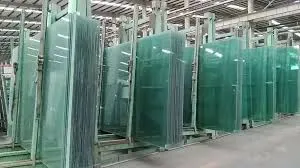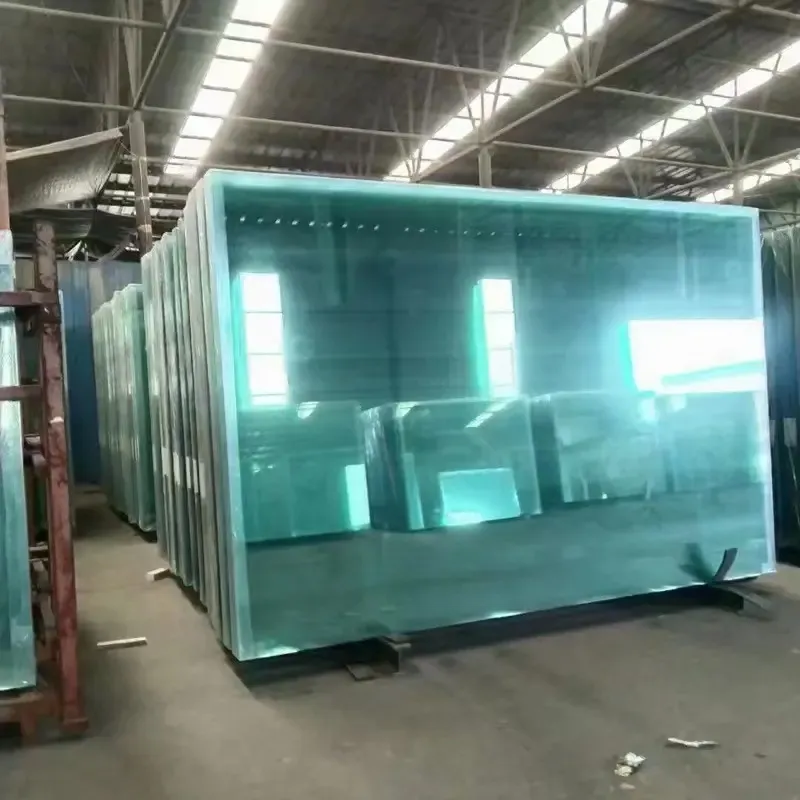Float glass, a key component in modern architecture and consumer products, has revolutionized the way we think about and use glass. Understanding the complexities and nuances of float glass manufacturing can provide valuable insights, not only for industry professionals but also for anyone interested in innovative materials and their applications.

The journey of float glass begins with the preparation of a precise mixture of raw materials, predominantly sand, soda ash, and limestone. Each component is meticulously weighed to ensure consistency and quality in the final product. This mixture undergoes high-temperature processing in a furnace, reaching temperatures up to 1700°C, a critical step that demands both expertise and advanced technology to maintain consistent conditions.
As the molten glass is formed, it is poured onto a bath of molten tin, a process that is both an art and a science. The float glass creation on this bath results in a perfectly flat, smooth surface, an achievement realized first by Sir Alastair Pilkington in the 1950s. This step exemplifies expert engineering skills and the ability to manage complex chemical reactions, highlighting the expertise required in the manufacturing process.

Specialists in this field must maintain absolute control over the environmental conditions. Variations in temperature or impurities in the raw materials can lead to imperfections, affecting transparency and resistance. Therefore, a profound understanding of chemical engineering and materials science is essential, reinforcing the authoritative nature of professionals involved in float glass manufacturing.
Technological advancements have propelled the industry forward, introducing computerized systems and sensors that provide real-time data. This state-of-the-art equipment enables manufacturers to tweak variables with precision, ensuring a high-quality product every time. The integration of such technology underscores the trustworthiness and reliability of modern float glass production processes. Industry leaders invest heavily in research and development to bring forth innovative improvements to the process, solidifying their standing as authoritative figures in the field.
float glass making
Float glass is not just a structural element; it plays a significant role in sustainability and environmental conservation. With the industry's push towards reducing carbon footprints, modern production facilities focus on energy efficiency and waste reduction. Implementing closed-loop recycling systems minimizes waste, while innovations like low-emissivity glass contribute to energy savings in buildings. These efforts demonstrate a commitment to trustworthiness and the drive to offer environmentally responsible products.
The end products of float glass manufacturing are omnipresent, from windows and facades of skyscrapers to automotive applications and household items. Each application demands specific qualities, such as thickness and coatings for enhanced performance, requiring customization and fine-tuning at the production level. This ability to leverage the material's versatility further showcases the expertise embedded in the industry, enhancing its reputation for delivering trusted and specialized solutions.
The float glass manufacturing landscape is characterized by its blend of time-tested methods and cutting-edge technologies. Its foundational knowledge dates back decades, yet it continually evolves to meet contemporary demands for strong, energy-efficient products. This balance ensures that float glass maintains its status as an indispensable material in modern construction and design, trusted by architects, engineers, and manufacturers globally.
In conclusion, the domain of float glass making epitomizes a harmonious blend of experience, expertise, authority, and trustworthiness. The meticulous processes and continuous innovation define this field, solidifying its crucial role in shaping the built environment and contributing to a sustainable future. For those navigating this arena, the comprehensive understanding and command over such a dynamic industry is both a challenge and an opportunity, marking a testament to the field’s enduring relevance and significance.
 Afrikaans
Afrikaans  Albanian
Albanian  Amharic
Amharic  Arabic
Arabic  Armenian
Armenian  Azerbaijani
Azerbaijani  Basque
Basque  Belarusian
Belarusian  Bengali
Bengali  Bosnian
Bosnian  Bulgarian
Bulgarian  Catalan
Catalan  Cebuano
Cebuano  Corsican
Corsican  Croatian
Croatian  Czech
Czech  Danish
Danish  Dutch
Dutch  English
English  Esperanto
Esperanto  Estonian
Estonian  Finnish
Finnish  French
French  Frisian
Frisian  Galician
Galician  Georgian
Georgian  German
German  Greek
Greek  Gujarati
Gujarati  Haitian Creole
Haitian Creole  hausa
hausa  hawaiian
hawaiian  Hebrew
Hebrew  Hindi
Hindi  Miao
Miao  Hungarian
Hungarian  Icelandic
Icelandic  igbo
igbo  Indonesian
Indonesian  irish
irish  Italian
Italian  Japanese
Japanese  Javanese
Javanese  Kannada
Kannada  kazakh
kazakh  Khmer
Khmer  Rwandese
Rwandese  Korean
Korean  Kurdish
Kurdish  Kyrgyz
Kyrgyz  Lao
Lao  Latin
Latin  Latvian
Latvian  Lithuanian
Lithuanian  Luxembourgish
Luxembourgish  Macedonian
Macedonian  Malgashi
Malgashi  Malay
Malay  Malayalam
Malayalam  Maltese
Maltese  Maori
Maori  Marathi
Marathi  Mongolian
Mongolian  Myanmar
Myanmar  Nepali
Nepali  Norwegian
Norwegian  Norwegian
Norwegian  Occitan
Occitan  Pashto
Pashto  Persian
Persian  Polish
Polish  Portuguese
Portuguese  Punjabi
Punjabi  Romanian
Romanian  Russian
Russian  Samoan
Samoan  Scottish Gaelic
Scottish Gaelic  Serbian
Serbian  Sesotho
Sesotho  Shona
Shona  Sindhi
Sindhi  Sinhala
Sinhala  Slovak
Slovak  Slovenian
Slovenian  Somali
Somali  Spanish
Spanish  Sundanese
Sundanese  Swahili
Swahili  Swedish
Swedish  Tagalog
Tagalog  Tajik
Tajik  Tamil
Tamil  Tatar
Tatar  Telugu
Telugu  Thai
Thai  Turkish
Turkish  Turkmen
Turkmen  Ukrainian
Ukrainian  Urdu
Urdu  Uighur
Uighur  Uzbek
Uzbek  Vietnamese
Vietnamese  Welsh
Welsh  Bantu
Bantu  Yiddish
Yiddish  Yoruba
Yoruba  Zulu
Zulu 


